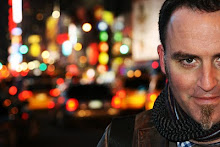This year, I was determined to make the most of the beautiful weather. Late May and early June were particularly lovely. My favourite time of the day is undoubtedly dusk. Twilight. The gloaming. The period when it gets dimpsey. The fact that there are so many words for it tells you that that the magical transition from day to night has intrigued and delighted people for generations. As the days get longer, and we approach Midsummer, dusk becomes all the more special. For me, there is nothing more beautiful than sitting on a hillside watching the sun coming down. The shadows lengthen. The wind picks up. The air becomes thick with electrons. Smells become more intense. The birds become deafening, and then, slowly, stop, replaced by the sparse hoots and shrieks of the night. Banks of lavender and pink clouds fade into a blue light and everything is suddenly mysterious. Your eyes start to play tricks. You see shapes moving out of the corner of your eye. You talk in whispers. Anything louder seems crass.
One day, I long to see the green flash. I have seen phosphorescence, the Northern Lights and a total eclipse of the sun. Each one was as magical and extraordinary as I’d hoped it would be. Phosphorescence, which I witnessed at midnight in Nerja in Spain whilst skinny dipping with Sam Becker and Philippa, was perhaps the most extraordinary, largely because it was so unexpected. We were lying on the beach, at the water’s edge, enjoying the sensation of the warm sea water lapping over us. We suddenly noticed a bank of green shimmering light on the waves, perhaps twenty meters out to sea. I’m not sure why we weren’t frightened. It seemed natural, somehow, and we were intrigued. We stayed put, allowing the gentle waves to wash over us as the light got closer and closer. And then it engulfed us. We all stood. I can’t tell you why. Maybe there was a moment of doubt or fear in us all. But I remember watching these glistening diamonds flowing down the contours of Sam and Philippa’s body as the water fell from them, and feeling the luckiest man in the world. And as soon as the phenomenon appeared, it had disappeared again.
Anyway, there has always been more than a whiff of the pagan about me. I don’t think any composer could make music without a belief in magic of sorts. I have always been intrigued by witchcraft, ghost stories and prehistoric communities and have a deep reverence for the power of nature. One of my favourite spots in the world is the Uffington White Horse in Oxfordshire. I have visited the place on countless occasions and introduced it to many friends. I have blogged very regularly about trips there, so I won’t describe it in great detail this time.
It’s undoubtedly the most iconic of the various white horses which are cut into chalk hillsides across England. White horses are ingrained in British folk law and they have intrigued us for countless years. I can guarantee that there’s a picture of a white horse somewhere in your house. If you look carefully on the front of a tub of Anchor Butter, for example, you’ll see a depiction of the Westbury White Horse in Wiltshire. Some of the carvings are Victorian, like the one at Sutton Bank in Yorkshire. Others, like the one at Westbury potentially date from the 9th Century. Uffington is special. It’s the oldest white horse in Britain, and possibly more than 3000 years old: a fact which I find utterly staggering. Its full beauty can only be seen from the air - which has generated many conspiracy theories about UFOs - but it is also far more figurative than many of its brothers and sisters and this adds to its mystery. Its quirky shape has been recreated on all manner of logos and tattoos.
Michael had never been there, so I decided to take him one night after work. I knew it was a long journey - perhaps a two-hour drive from London - so didn’t tell him where we were heading. We simply packed a picnic and headed west on the M4.
 |
| Michael with the White Horse behind him |
 |
| That orange light... |
 |
| Those impossibly long shadows |




























